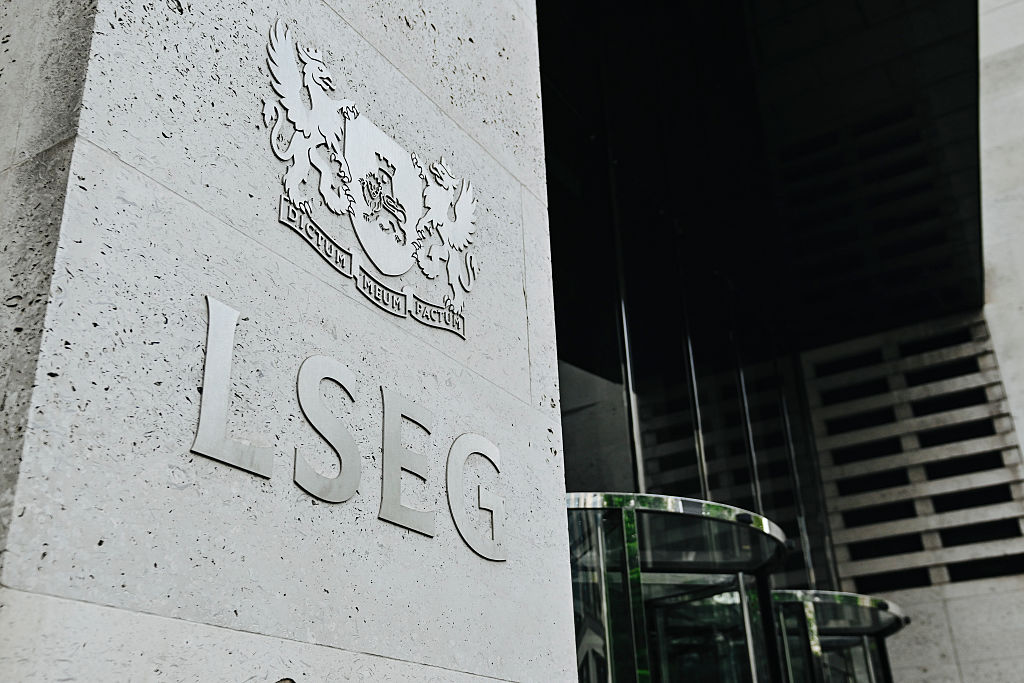Aim ISAs celebrate their 10th anniversary: which stocks have performed best?
We look at how Aim ISAs work, how the alternative investment market (Aim) has changed over the past decade, the most popular stocks - and which ones have performed best.


In August 2013, the UK was emerging from recession, and George Osborne, the then chancellor, thought encouraging investment into smaller and newer businesses would help jumpstart the economy.
And so the Aim ISA was born. Making Aim shares ISA-eligible meant investments into Aim shares were potentially free of income tax, capital gains tax and, after two years, inheritance tax – one of the most generous sets of tax reliefs available to private investors.
On 5 August 2023, the Aim ISA celebrated its 10-year anniversary.
MoneyWeek
Subscribe to MoneyWeek today and get your first six magazine issues absolutely FREE

Sign up to Money Morning
Don't miss the latest investment and personal finances news, market analysis, plus money-saving tips with our free twice-daily newsletter
Don't miss the latest investment and personal finances news, market analysis, plus money-saving tips with our free twice-daily newsletter
We look at how the ISAs work, how the Aim has changed, and which stocks have performed the best.
How do Aim ISAs work?
You can buy Aim shares within a stocks and shares ISA, or you can set up a separate Aim ISA, which sometimes has a slightly different name like Aim Inheritance Tax ISA.
Investing in Aim stocks via an ISA means you get all the same tax benefits as other ISAs, so any growth or income is tax-free. Aim shares are also exempt from stamp duty.
There are a few added benefits. Aim shares can potentially qualify for business property relief (BPR) for inheritance tax purposes. If an investor holds qualifying Aim shares for at least two years before their death, those shares may be eligible for 100% relief from the tax.
This means they would not be included in the taxable estate for inheritance tax (IHT) purposes, effectively reducing the IHT liability.
However, not all Aim shares automatically qualify for this relief. To qualify, the shares must meet specific criteria, including being shares in a trading company or a holding company of a trading group, and the company's activities should be primarily trading (rather than investment or non-trading activities). Shares in oil and gas and mining companies do not qualify for BPR.
How much can I save in an Aim ISA?
The maximum amount you can pay into an Aim ISA in the 2023/24 tax year is £20,000. This is the adult ISA allowance, which can be spread across different ISAs.
For example, you could pay £5,000 into a cash ISA and £15,000 into an Aim ISA - or a stocks and shares ISA that holds Aim shares.
Note that if you’d like to open a specialist Aim ISA, you usually need a large amount of money, say a minimum of £20,000; this level is set by the investment provider.
How has the Aim changed since 2013?
Set up in 1995 to help growing companies raise funds, the Aim - which stands for alternative investment market - gained the infamous reputation of the “Wild West” owing to a history of scandals and company collapses as well as accusations of lack of regulation.
But the junior market has matured over the years. According to the investment platform Interactive Investor, the Aim has grown from 10 companies worth a total of £82.2 million to 852 companies with a combined market cap of almost £135 billion.
The market is also a lot broader, from oil, green energy and miners through to retail giants including household names such as Boohoo, Jet2 and Fevertree. Back in 2013, 30% of the top 50 stocks were speculative oil and gas or mining companies, whereas today energy stocks account for just 6.5%, according to the investment service Wealth Club.
In 2013, six companies had a market capitalisation of more than £1 billion, and four of them were oil and gas companies.
By 2023, nine companies were valued at over £1 billion, none of which were in the oil and gas sector.
The Wealth Club notes that of the 50 largest companies quoted on Aim in 2013, only eight are still on that list today – Jet2, EMIS, Hutchmed (China), James Halstead, Polar Capital Holdings, RWS Holdings, Smart Metering Systems and Youngs & Co Brewery.
“Aim has changed a lot over 10 years,” comments Nicholas Hyett, investment manager at Wealth Club. “While at the smaller end, the market continues to support fundraising by a wide range of young businesses, many of its early constituents have matured into bigger, more stable businesses. It’s these companies, rather than more speculative commodity stocks, that now form the backbone of the market.
“That is good news for investors, especially for those looking to benefit from the market’s potential for IHT relief.”
He adds that as well as the IHT relief, Aim investors can also enjoy decent returns plus dividends. Of the eight companies that have kept their places in Aim’s 50 largest companies since 2013, seven paid a dividend this year. “And all have delivered returns far in excess of the wider market. In fact, we think dividends are a good sign of quality when investing in smaller companies generally, and particularly on Aim. They indicate profitability, cash generation and a shareholder-centric view that is supportive of long-term returns.”
Lee Wild, head of equity strategy at Interactive Investor, notes that there are risks with investing in small, growth stocks on Aim, and “the sharp rise in interest rates is a prime example of how growth stocks are more vulnerable in a crisis.
“But the benefits, when market conditions are right, can be remarkable. At its post-2013 peak in 2021, the Aim was by far the best-performing UK index and had outperformed many of the world’s major markets.”
How has the market performed?
The FTSE Aim All-Share Index has delivered a relatively modest return of 21% over the past 10 years to the end of July, underperforming the FTSE 100 (71%) FTSE All Share (71%) and the S&P 500 (288%).
But the market has been on a rollercoaster ride, comfortably outperforming the main market at times and lagging at others.
According to Wealth Club, recent weakness and changes to the sorts of companies listed on the market mean the Aim is looking attractive valuation-wise, trading on a price-earnings ratio of 10.6x and a dividend yield of 2.4% (the highest at any point in the last 10 years).
Which Aim stocks have performed best?
Smaller companies may be more susceptible to economic downturns, market volatility, or operational challenges. Certainly, dozens of Aim stocks have collapsed over the past decade.
However, investors - and fund managers - that picked one of the top 10 performing Aim stocks would have been rewarded handsomely.
The best performer since Aim ISAs were introduced in 2013 is Victoria PLC, the flooring product company, which has returned 3,584%.
This is followed by mining company Greatland Gold (2,364%) and competition company Best of the Best (2,313%).
| Top Ten Performers on Aim | 10-year return |
|---|---|
| VICTORIA PLC | 3583.8% |
| GREATLAND GOLD PLC | 2364.3% |
| BEST OF THE BEST PLC | 2313.4% |
| IMPAX ASSET MANAGEMENT GROUP PLC | 1905.7% |
| AB DYNAMICS PLC | 1623.6% |
| TRISTEL PLC | 1540.9% |
| MARLOWE PLC | 1467.1% |
| YOUGOV PLC | 1420.4% |
| WATER INTELLIGENCE PLC | 1311.3% |
| SERICA ENERGY PLC | 1231.9% |
Source: Wealth Club
Which Aim stocks are most popular?
In terms of which stocks are favoured by fund managers - and looking across the UK All Companies, UK Equity Income and UK Smaller Companies sectors - here are the most popular Aim companies:
| Header Cell - Column 0 | Ten most popular Aim stocks with UK fund managers | Number of managers investing in the company |
|---|---|---|
| 1 | GB Group | 56 |
| 2 | Gamma Communications | 55 |
| 3 | Jet 2 | 55 |
| 4 | RWS Holdings | 52 |
| 5 | Serica Energy | 48 |
| 6 | Smart Metering Systems | 41 |
| 7 | Next Fifteen Communications | 39 |
| 8 | Alpha Financial Markets Consulting | 38 |
| 9 | Fevertree Drinks | 38 |
| 10 | Team17 Group | 38 |
Source: Wealth Club
In terms of private investors picking their own Aim stocks, these are the most popular on the Interactive Investor platform this year (to 5 August 2023):
| Position | Company |
|---|---|
| 1 | BOOHOO GROUP PLC |
| 2 | VAST RESOURCES PLC |
| 3 | PREMIER AFRICAN MI |
| 4 | AVACTA GROUP |
| 5 | KODAL MINERALS PLC |
| 6 | PANTHEON RESOURCES |
| 7 | BARON OIL PLC |
| 8 | IOG PLC |
| 9 | JET2 PLC |
| 10 | ITM POWER |
Join us at the MoneyWeek Summit on 29.09.2023 at etc.venues St Paul's, London.
Tickets are on sale at www.moneyweeksummit.com
MoneyWeek subscribers receive a 25% discount.
Get the latest financial news, insights and expert analysis from our award-winning MoneyWeek team, to help you understand what really matters when it comes to your finances.

Ruth is an award-winning financial journalist with more than 15 years' experience of working on national newspapers, websites and specialist magazines.
She is passionate about helping people feel more confident about their finances. She was previously editor of Times Money Mentor, and prior to that was deputy Money editor at The Sunday Times.
A multi-award winning journalist, Ruth started her career on a pensions magazine at the FT Group, and has also worked at Money Observer and Money Advice Service.
Outside of work, she is a mum to two young children, while also serving as a magistrate and an NHS volunteer.
-
 High earners face £15k income hit by 2029 following Autumn Budget
High earners face £15k income hit by 2029 following Autumn BudgetRachel Reeves’s Autumn Budget means high earners – or HENRYs – are now looking at an income hit running into the thousands. Can you avoid it?
-
 Millions underestimate how many paydays are left until retirement - why you should be counting your payslips
Millions underestimate how many paydays are left until retirement - why you should be counting your payslipsKeeping track of how long you will be earning a salary for can help work out how much you need to put into a workplace pension
-
 London Stock Exchange gets go-ahead to run Pisces private stock market
London Stock Exchange gets go-ahead to run Pisces private stock marketThe Pisces market will allow investors to buy and sell shares in private companies. But how will it work, when will it launch, and who is allowed to use it?
-
 Halifax: House price slump continues as prices slide for the sixth consecutive month
Halifax: House price slump continues as prices slide for the sixth consecutive monthUK house prices fell again in September as buyers returned, but the slowdown was not as fast as anticipated, latest Halifax data shows. Where are house prices falling the most?
-
 Rents hit a record high - but is the opportunity for buy-to-let investors still strong?
Rents hit a record high - but is the opportunity for buy-to-let investors still strong?UK rent prices have hit a record high with the average hitting over £1,200 a month says Rightmove. Are there still opportunities in buy-to-let?
-
 Pension savers turn to gold investments
Pension savers turn to gold investmentsInvestors are racing to buy gold to protect their pensions from a stock market correction and high inflation, experts say
-
 Where to find the best returns from student accommodation
Where to find the best returns from student accommodationStudent accommodation can be a lucrative investment if you know where to look.
-
 The world’s best bargain stocks
The world’s best bargain stocksSearching for bargain stocks with Alec Cutler of the Orbis Global Balanced Fund, who tells Andrew Van Sickle which sectors are being overlooked.
-
 Revealed: the cheapest cities to own a home in Britain
Revealed: the cheapest cities to own a home in BritainNew research reveals the cheapest cities to own a home, taking account of mortgage payments, utility bills and council tax
-
 UK recession: How to protect your portfolio
UK recession: How to protect your portfolioAs the UK recession is confirmed, we look at ways to protect your wealth.